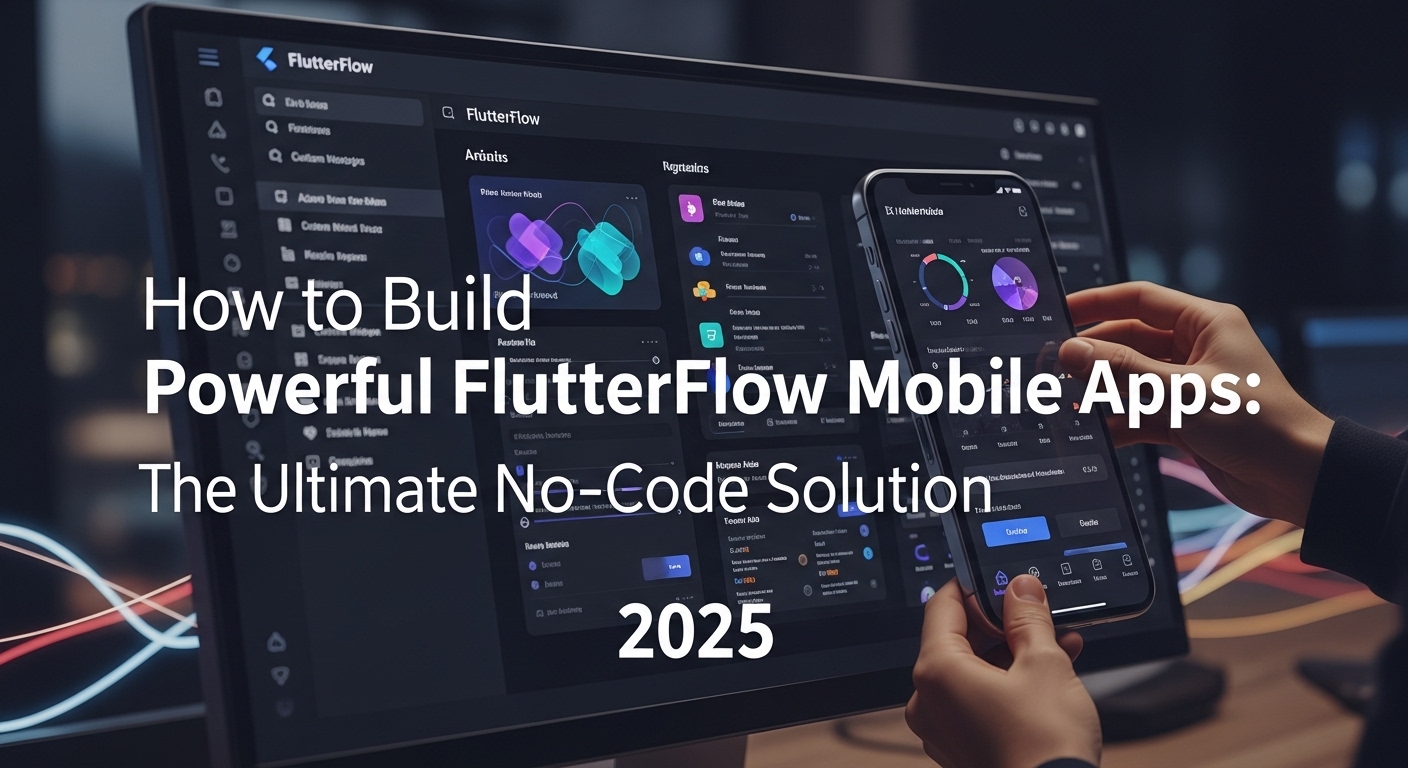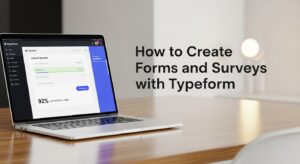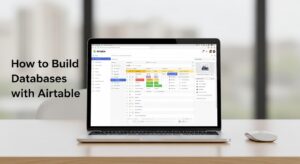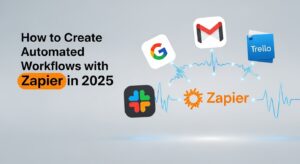Building mobile apps with FlutterFlow has revolutionized the way developers and non-developers approach app creation. This powerful no-code platform enables anyone to create professional mobile applications without writing a single line of code.
What is FlutterFlow and Why Choose It for Mobile App Development?
FlutterFlow is a visual development platform that generates Flutter code automatically. Built by former Google engineers, it combines the power of Google’s Flutter framework with an intuitive drag-and-drop interface.
Key Advantages of FlutterFlow Mobile Apps:
- Cross-platform compatibility: Build once, deploy everywhere
- Real-time collaboration: Work with teams seamlessly
- Custom code integration: Add custom Flutter code when needed
- Firebase integration: Built-in backend services
- Responsive design: Automatic adaptation to different screen sizes
The platform has gained massive popularity because it bridges the gap between visual development and professional app creation.
Getting Started with FlutterFlow Mobile Apps
Step 1: Creating Your FlutterFlow Account
Visit FlutterFlow.io and sign up for an account. The platform offers both free and paid tiers, with the free version providing excellent functionality for beginners.
Step 2: Understanding the FlutterFlow Interface
The FlutterFlow interface consists of several key components:
Component | Purpose | Key Features |
Widget Tree | Visual hierarchy | Drag-and-drop functionality |
Canvas | Design preview | Real-time updates |
Properties Panel | Widget customization | Styling and behavior options |
Action Flow Editor | Logic implementation | Visual programming |
Step 3: Planning Your FlutterFlow Mobile App
Before diving into development, create a clear roadmap:
- Define your app’s core functionality
- Sketch wireframes for key screens
- Identify required integrations
- Plan your data structure
Essential FlutterFlow Features for Mobile App Development
Visual Widget Builder
FlutterFlow’s visual builder makes creating mobile apps intuitive. The platform provides numerous pre-built widgets:
- Layout widgets: Container, Row, Column, Stack
- Input widgets: TextField, Dropdown, Checkbox
- Display widgets: Text, Image, Icon, Card
- Navigation widgets: AppBar, BottomNavigationBar, Drawer
Each widget comes with extensive customization options, allowing you to create unique designs without coding.
Firebase Integration
One of FlutterFlow’s strongest features is its seamless Firebase integration. You can easily connect your mobile apps with:
- Firestore Database: Real-time data synchronization
- Authentication: User login and registration
- Storage: File and image uploads
- Cloud Functions: Server-side logic
- Analytics: User behavior tracking
Custom Actions and Functions
While FlutterFlow excels at no-code development, it also supports custom code integration. Advanced users can:
- Add custom Flutter widgets
- Implement complex business logic
- Integrate third-party APIs
- Create reusable custom functions
Building Your First FlutterFlow Mobile App: Step-by-Step Guide
Step 1: App Structure Setup
Start by creating a new project and defining your app’s basic structure:
- Choose your app template or start from scratch
- Configure your app settings (name, bundle ID, icons)
- Set up your navigation structure
- Define your color scheme and typography
Step 2: Designing App Screens
FlutterFlow mobile apps benefit from thoughtful screen design:
Home Screen Development:
- Create a welcoming landing page
- Implement navigation elements
- Add key action buttons
- Ensure responsive design
User Interface Best Practices:
- Maintain consistent spacing
- Use appropriate font sizes
- Implement proper color contrast
- Optimize for different screen sizes
Step 3: Adding App Logic
FlutterFlow’s Action Flow Editor enables you to add sophisticated logic:
- State Management: Handle app state changes
- API Calls: Connect to external services
- Conditional Logic: Implement if-then scenarios
- Data Manipulation: Process and display information
Step 4: Database Integration
Setting up data storage for your FlutterFlow mobile apps:
- Configure Firestore collections
- Define data models
- Implement CRUD operations
- Set up real-time listeners
Advanced FlutterFlow Mobile App Features
Animation and Interactions
FlutterFlow provides powerful animation capabilities:
- Page transitions: Smooth navigation effects
- Widget animations: Hover and tap effects
- Loading states: User feedback during operations
- Micro-interactions: Enhanced user experience
Third-Party Integrations
Expand your app’s functionality with popular integrations:
- Payment processing: Stripe, PayPal
- Maps and location: Google Maps, Mapbox
- Social media: Facebook, Twitter, Instagram
- Analytics: Google Analytics, Mixpanel
Responsive Design Implementation
Ensure your FlutterFlow mobile apps work across devices:
- Define breakpoints for different screen sizes
- Use flexible layouts
- Implement adaptive navigation
- Test on various devices
Testing Your FlutterFlow Mobile Apps
Built-in Testing Tools
FlutterFlow provides several testing options:
- Preview mode: Real-time app preview
- Device simulation: Test different screen sizes
- Hot reload: Instant code updates
- Web preview: Browser-based testing
Best Testing Practices
Follow these guidelines for thorough testing:
- Test on actual devices regularly
- Validate user flows end-to-end
- Check performance under load
- Verify offline functionality
- Test across different operating systems
Deploying FlutterFlow Mobile Apps
App Store Preparation
Before publishing your FlutterFlow mobile apps:
- Generate app icons and splash screens
- Configure app metadata
- Set up proper permissions
- Prepare marketing materials
Deployment Options
FlutterFlow offers multiple deployment paths:
Platform | Requirements | Timeline |
Google Play Store | Developer account, app signing | 2-3 days review |
Apple App Store | Developer program membership | 1-7 days review |
Web deployment | Custom domain (optional) | Instant |
Post-Launch Optimization
After launching your FlutterFlow mobile apps:
- Monitor user analytics
- Collect user feedback
- Implement iterative improvements
- Plan feature updates
Common Challenges and Solutions
Performance Optimization
Ensure your FlutterFlow mobile apps perform well:
- Image optimization: Use appropriate file formats and sizes
- Database queries: Implement efficient data fetching
- Widget optimization: Avoid unnecessary rebuilds
- Memory management: Monitor resource usage
Scaling Considerations
As your app grows, consider:
- Database indexing strategies
- Caching implementation
- CDN usage for static assets
- Load balancing for high traffic
FlutterFlow vs. Traditional Development
Advantages of FlutterFlow Mobile Apps
- Faster development: Significantly reduced time-to-market
- Lower costs: Minimal coding expertise required
- Visual development: Intuitive interface design
- Automatic code generation: Clean, maintainable Flutter code
When to Consider Traditional Development
While FlutterFlow is powerful, traditional development might be better for:
- Highly complex applications
- Performance-critical apps
- Unique custom requirements
- Large enterprise applications
Future of FlutterFlow Mobile App Development
The platform continues evolving with regular updates:
- Enhanced AI capabilities
- Improved performance optimization
- Extended widget library
- Better collaboration tools
Learning Resources and Community
Enhance your FlutterFlow mobile app development skills:
- Official documentation: FlutterFlow Documentation
- YouTube tutorials: FlutterFlow official channel
- Community forum: Active developer discussions
- Templates marketplace: Pre-built app templates
Conclusion
Building mobile apps with FlutterFlow represents a paradigm shift in app development. The platform democratizes mobile app creation, enabling entrepreneurs, designers, and developers to bring their ideas to life quickly and efficiently.
Whether you’re creating your first mobile app or looking to streamline your development process, FlutterFlow mobile apps offer an excellent balance of simplicity and power. The visual development approach, combined with Flutter’s robust foundation, creates opportunities for innovation without the traditional barriers of mobile app development.
Start your FlutterFlow journey today and experience the future of no-code mobile app development. With proper planning, thoughtful design, and the strategies outlined in this guide, you’ll be creating professional mobile applications that compete with traditionally coded apps.











